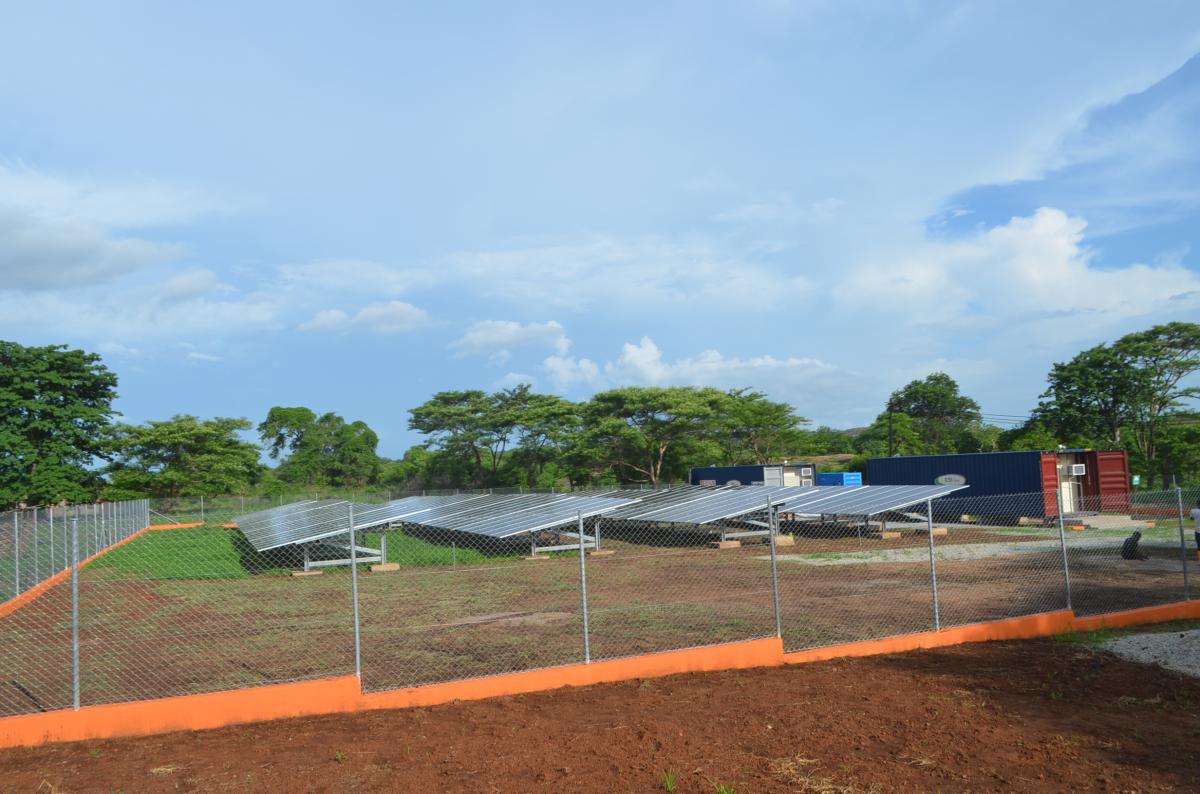Search
Viewing 1 to 15 of 39 news
-
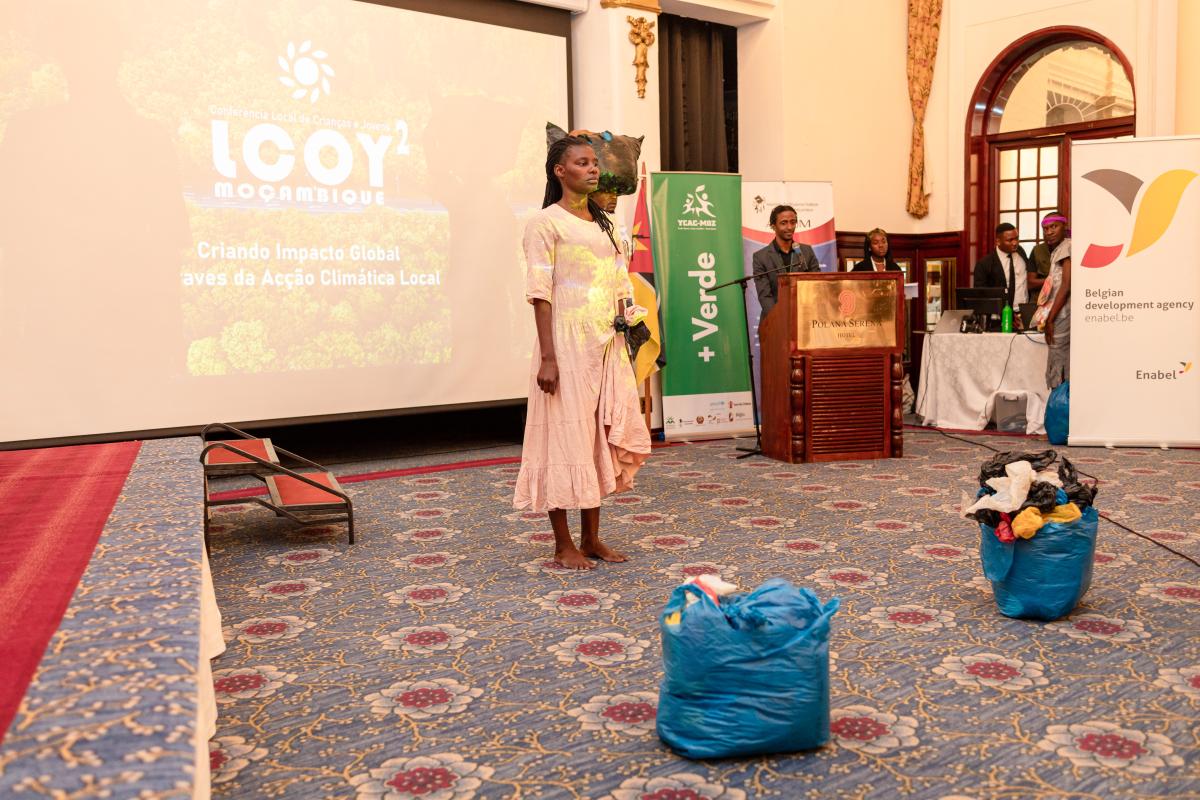
Mozambican Children and Youth Leading the Way in Climate Action
Velsoma CUMBANA | 18/10/2024
On August 22-23, 2024, Maputo became the stage of a movement for change during the Second official UN-endorsed national Local Conference of Children and Youth on Climate Change in Mozambique (LCOY-Mozambique). LCOYs are hosted every year in over 120 countries prior to the UN Conference of Parties (COP) and serve as a space to amplify youth climate action ahead of international conferences. In Mozambique, the Youth Climate Action Platform (YCAC-MOZ), serves as the official organiser and representative of the LCOY and is supported by a network of partners, including Enabel – the Belgian development agency. This year, the conference brought together over 150 young people from across Mozambique. A pivotal moment of the event was the ratification of the Youth Climate Declaration, a document symbolising the leadership and commitment of Mozambique's youth in addressing climate change. Building the Future Today The ratification of the Declaration was a significant affirmation of the readiness of Mozambican youth to take a leading role in climate action. This document captures the hopes and concerns of a generation acutely aware of the environmental challenges we face. It reflects their resolve to be at the forefront of developing practical and sustainable solutions. Over the course of the two-day conference, participants engaged in deep discussions on crucial topics such as Nationally Determined Contributions (NDCs), Carbon Markets, Human Rights, Energy Transition, Water, Health, and Biodiversity. Mozambique is in the process of elaborating its 3rd NDC, which represents a roadmap for the future, guiding investments in clean energy, climate adaptation, and sustainable practices, which can directly impact youth employment and education opportunities. These discussions were closely tied to the lived experiences of the youth and their communities. On a Carbon Markets focused panel discussion featuring Xana Maunze, Climate Finance Officer at Enabel and a youth climate advocate, through interactive panels, they not only expanded their understanding of these issues but also identified actionable strategies that can be implemented locally. A Roadmap for Change This Declaration, ratified at the conference’s conclusion, serves as a manifesto for the urgent needs and priorities of the present time. It provides a clear roadmap for the commitments and actions these young leaders plan to demand for, promote and pursue. The Declaration calls for concrete steps, including: Organizing inclusive public consultations and workshops to incorporate youth perspectives into Mozambique’s NDCs. Ensuring the broad dissemination of climate policies across all societal levels, particularly in rural and vulnerable communities.Establishing national and local actions for climate mitigation and adaptation, with clear emission reduction targets and the promotion of sustainable agricultural practices. The document will be shared with both public and private entities to ensure that the perspectives of youth are integrated into policy-making and climate action initiatives. Youth as Agents of Change This initiative marks the beginning of a continuous process of engagement, learning, and action. It underscores that Mozambican youth are not merely recipients of development projects but are active leaders in the implementation of climate solutions. Their determination and creativity in addressing climate challenges are evident, and Enabel is privileged to support them as they bring their ideas and projects to life. This is the power of youth: creating the future today. Together, we can ensure that this future is sustainable, inclusive, and just for all.
-
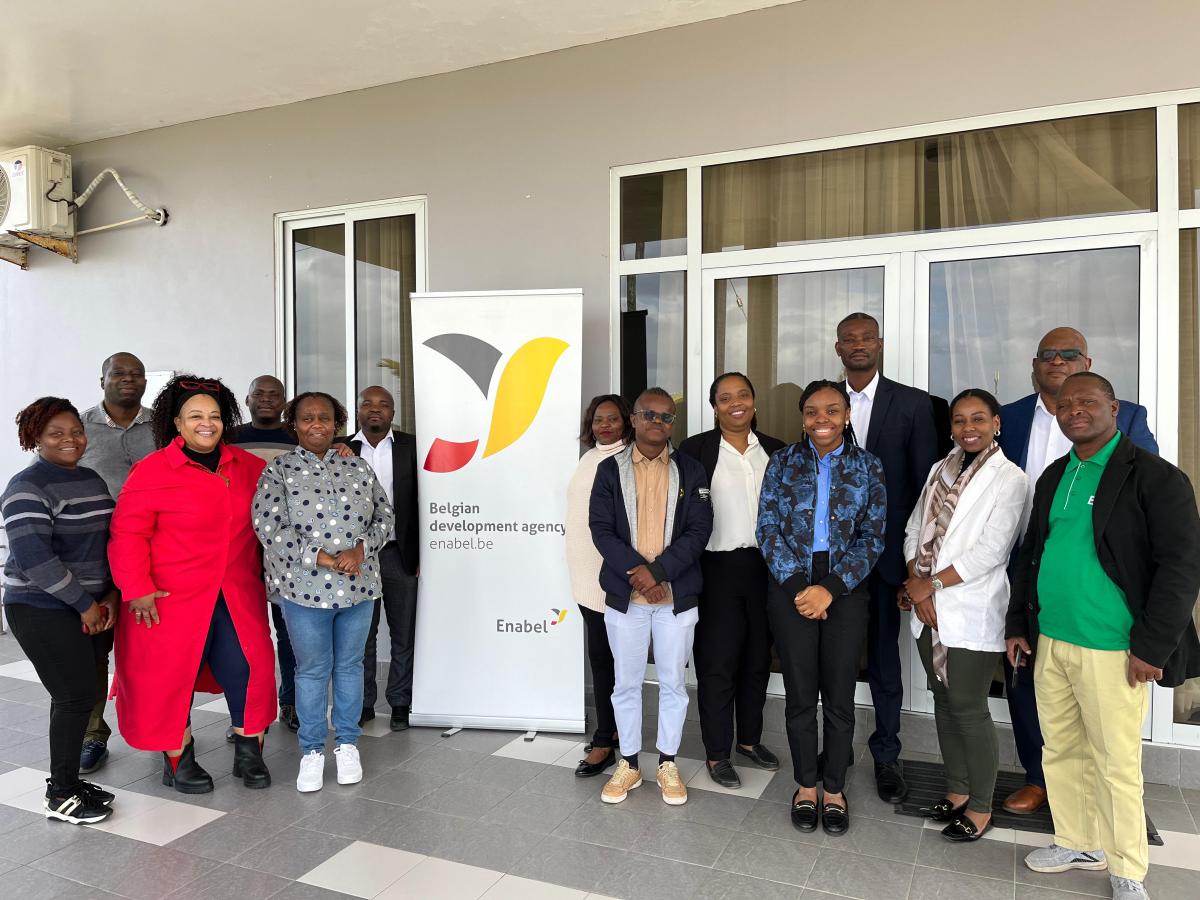
Mozambique: Advancing National Climate Finance Mobilisation with our new Readiness Programme
Velsoma CUMBANA | 06/08/2024
In recent months, Mozambique has made significant strides towards strengthening its institutional capacities for mobilising climate finance. In two important events held in July 2024, crucial initiatives were launched to accelerate and expand the mobilisation of climate resources in the country. Initial steps in MacanetaOn July 8 and 9, the inaugural seminar of the Green Climate Fund (GCF) activities in Mozambique was held in the district of Macaneta, a few kilometres away from the capital city. This event marked the beginning of the new "Readiness Programme" aiming at strengthening institutional capacities and coordination mechanisms to increase the mobilisation of climate finance. The seminar was attended by key stakeholders, including the National Directorate of Monitoring and Evaluation of the Ministry of Economy and Finance (GCF’s National Designated Authority - NDA) and the Advisory Committee, composed of representatives from various government sectors. The main objectives were (1) to inform about the new GCF Strategic Plan and Readiness Strategy for 2024-2027, (2) to present the Climate Investment Mobilisation and Planning Framework of the GCF-NDC Partnership, and (3) to outline the activity plan for the implementation of the Readiness Programme. During the discussions, challenges such as lengthy procedures for project proposal applications, the absence of a National Programme to guide the country's climate finance priorities, and the lack of nationally accredited entities were identified. Addressing the Challenges To directly address the challenges identified in Macaneta, a workshop was held on July 29 and 30 with the aim of defining priority sectors and projects for the development of the GCF "Country Programme." Ponta do Ouro was the stage for laying the groundwork for the implementation of climate projects in Mozambique and meeting the need for a National Programme to guide climate finance priorities. The first day of the workshop featured an overview of the new Readiness Strategy (2024-2027), ways to access GCF funds, and institutional arrangements to facilitate fund mobilisation. Discussions focused on submitting integrated projects to increase coverage and avoid duplication of efforts. The identified priority areas were: Electrification through mini-grids integrated with rural development approach. Water and sanitation, disaster risk reduction integrated with early warning systems interconnected with NAPs (National Adaptation Plans). Water preservation for community use through small dams and/or excavated reservoirs. Moving forward… The events in Macaneta and Ponta do Ouro not only marked the beginning of a new phase for climate finance in Mozambique but also highlighted the importance of a coordinated effort between the government, private sector, and other stakeholders. Strengthening institutional capacities and creating an efficient environment for processing climate projects are essential to ensure that Mozambique is prepared to face the challenges of climate change and achieve its goals under the Paris Agreement. In the coming months, meetings and other activities will be held to promote greater involvement of the private sector and various government sectors, with the ultimate goal of increasing climate finance mobilisation directed towards Mozambique.
-
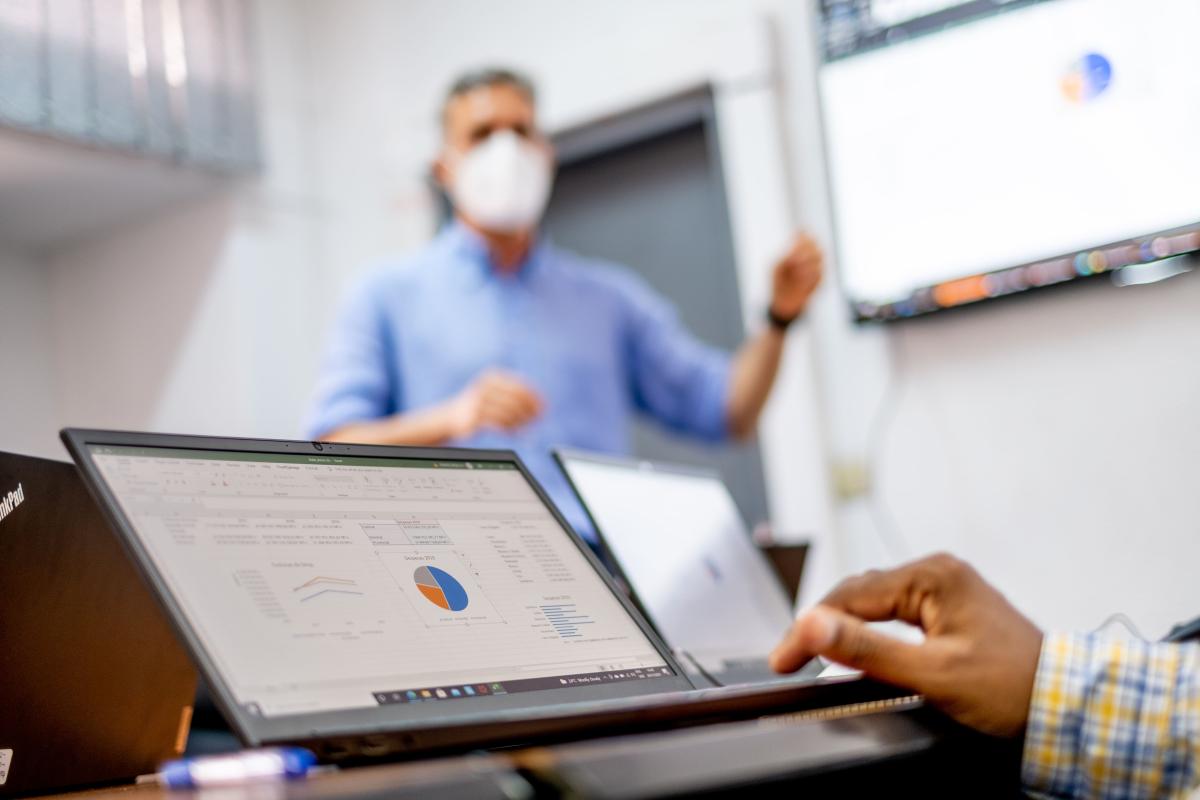
Strengthening health care financing: the public finance management transition in Mozambique
Velsoma CUMBANA | 26/03/2024
In the landscape of health service delivery, the management of public finances plays a crucial role. It is the invisible pipeline that ensures that resources flow to finance services, so communities and citizens receive the care they need. The efficiency and effectiveness of the provision of services depend on the well-functioning of the pipes' framework that is supposed and expected to remain invisible. Indeed, as one expects to have water when one turns the tap, one does not want to see the pipes that bring water into one's house. The PFM4SD (Public Financial Management for Service Delivery) project financed by the Government of Flanders has this declared objective enshrined in its name. The implementation of the Public Expenditure and Financial Accountability (PEFA) 2020 and its Action Plan was one of the means to achieve its objective. Starting the Race: A Journey of Adaptation Like any journey, ours has been filled with challenges along the way. Conducting the PEFA evaluation during the COVID-19 pandemic and the restrictions to gathering, posed logistical hurdles. But this wasn't exactly journey. Rather a relay race with obstacles that demanded strength, stamina, adaptability and the end of a phase marks the beginning of a new one. Passing along the baston. Come with us as we unveil each step of the race. The project played along with the hurdles and was able to transform them into opportunities that multiplied the visibility and the impact of the assessment: The final launching seminar was postponed because of COVID. What looked like a delay, become a lift from a powerful car. The PEFA Health was launched together with the National PEFA, with a larger audience and a broader forum that could look at PFM both from the point of view of the institution that has to keep the revenues and expenditures in equilibrium – the Ministry of Economy and Finance – and a sector that must provide services and therefore requires resources at the right time. The resources saved from the last seminar were used to elaborate an Action Plan to address the identified weaknesses. This was functional to pass the baton to government for tackling the system weaknesses and sitting on the bench for coaching. Overcoming obstacles The implementation of the PEFA evaluation and of the Action Plan represented more than just a checklist of tasks — it was an opportunity to invest in the capacity of personnel within the health sector. The project from the bench kept its commitment to support the team.Through targeted training programs and knowledge transfer initiatives, we mobilised our expertise and resources to empower technicians with the skills and knowledge necessary to drive sustainable change. One of our key achievements has been the implementation of technical improvements aimed at addressing longstanding inefficiencies within the sector. By focusing on capacity-development initiatives, we have contributed to the training of local technicians to analyse public financial management processes independently, fostering a culture of self-reliance and ownership. Passing the Baton: A Vision for Tomorrow Just like in a relay race, every end is followed by another start. Despite the progress made, challenges and opportunities for improvement remain. The implementing reforms and fostering behavioural change to improve the quality of public service – healthcare services for what we are concerned in this case - requires consistency as well as the capacity to identify and transform in opportunities that situation generates, without limiting the scope of its action to preset targets. Issues such as closing bank accounts outside the Single Treasury Account – (Conta Única do Tesouro - CUT) and settling overdue expenses stand out as areas that need continued attention and redoubled efforts. In addition, the need for capacity building and institutional strengthening remains pressing, especially regarding the planning and budgeting subsystem and investment and infrastructure management. Looking ahead, we envision a future where our assistance becomes obsolete, where our partners gain independence in identifying and resolving issues. We aim to pass the baton, disappearing like salt in water, leaving behind a legacy of strengthened capacity and empowered institutions. As we prepare for the next phase, we remain steadfast in our commitment to overcoming roadblocks and fostering effective policy-based budgeting. Our goal is clear: to ensure that resource management continuously enhances service delivery, paving the way for a healthier and more prosperous Mozambique. The Government will now use the resources from the Global fund to finance the new PEFA. The current thinking is that the evaluation will be done by the personnel of the sector. The external capacity will be responsible for training the people, oversee the entire process and guarantee the quality of evaluation. The project will be sitting on the bench coaching the people that take responsibility for the process.
-
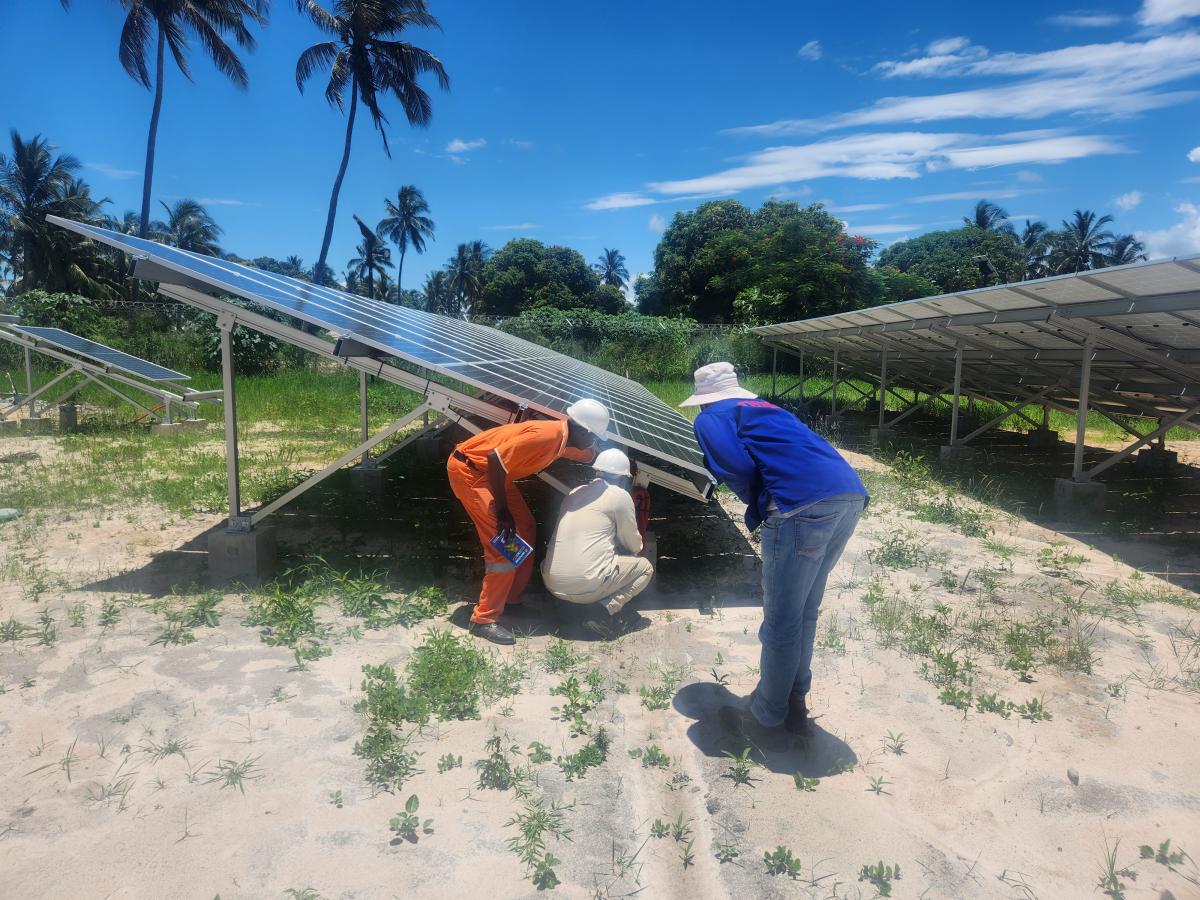
New hope arises for the inhabitants of Idugo Island in Mozambique, thanks to a solar powered grid
Alfredo MANDLATE | 23/02/2024
A major transformation will improve the quality of the life of the residentsLocated 72 kilometers from the village of Mocubela, a major transformation is taking place on the island of Idugo. The construction of the solar-powered mini grid will bring significant changes to the community and brighten the future of all residents by providing access to electricity on the island. This initiative is a crucial step towards improving the quality of life of the island's residents and boosting sustainable development in Idugo. For decades, more than 13,000 residents of Idugo (less than 10% have access to energy through small solar panels and batteries) faced major challenges related to electricity on the island. The lack of electricity limits progress and significantly affects the community's quality of life. Idugo is a fishing community. Currently, to preserve fish, residents need to travel to Pebane to buy ice, which is an hour away by boat and involves high costs. Additionally, health centers and schools on the island have limited operations once it gets dark. This fact makes the community leader of the island of Idugo, Mr. Felisberto Veloso, unhappy, he tells how hard it is to live on an island without electricity and what implications this brings to day-to-day life : “The population of the island of Idugo is composed of mostly fishermen and life becomes very complicated without energy, as we cannot store the fresh fish. To prevent the fish from spoiling, some are salting it and others are drying the fish in the sun. At the schools, we don't have night shifts and in hospitals, they use small battery-powered lamps, which makes night births very difficult and dangerous. Part of the population ends up leaving the island to build and live outside the island, in Pebane, Gurai, Tapata, and Mocubela.” This situation highlights the critical importance of access to electricity and how the lack of it impacts many aspects of daily life. The search for sustainable and affordable solutions to meet this need is fundamental to improving the quality of life of the inhabitants of Idugo. With the support of the Government of Mozambique (through the Energy Fund- FUNAE) and Belgium (through the development agency Enabel), a solar-powered mini grid is being built on the island to the relief and joy of the local population. This is a plant with a capacity of 230 kWp and 1330 kWh of storage, supplying energy to a distribution network with an extension of 4.2KM of medium voltage and 45KM of low voltage, and it will connect 1125 homes, commercial establishments, health facilities, schools, administrative building, churches and ensure public lighting for 200 public lamps in the 3 neighbourhoods of the island. A DREAM ABOUT TO COME TRUE! Since the start of the works in September 2022, the construction of the Idugo mini grid has been a constant challenge. The island of Idugo is only accessible by boat from Gurai (Bajone, Mocubela district) or Pebane. Furthermore, the rainy season significantly limits the possibilities for progressing the work. The absence of a pier for docking and unloading heavy equipment, such as generators and transformers, makes the construction of this mini grid extra challenging compared to the other mini grids under construction in Zambézia and Nampula Provinces. Currently, the works are progressing at a good pace, and the contractor (the ENERSOL/AZIMUT360 consortium with Mozambican subcontractor Tecnel) already has completed the construction of the plant and the battery house. This noticeable progress fills the local community with hope because it envisions the possibility of having finally electricity on their island and symbolizes the opportunity to further develop the island. February 1st will be remembered by all Idugo islanders, as well as for the team involved in the construction of the mini grid. That was the day the first posts of the distribution grid were erected. According to the Intervention Officer of the project, Arn Jonkers, “the installation of the first pole is a very important milestone for the project, since the construction of the distribution network is part of the mini grid construction that requires the most time. Idugo is only accessible via boat, which means that a mini grid and/or individual solar systems are the only options for the population to access energy. Furthermore, being a fishing community, they need energy to conserve fish, making access to electricity an significant catalyst for development on the island. So, Idugo is a classic example of productive use of energy in a mini grid”. With the ongoing installation of the mini grid, the island's residents can already dream about the big changes the mini grid can bring to their lives. What was almost impossible is now close to being a reality for residents. The community leader, Mr Felisberto Veloso, confirms this fact by saying, “years ago I could never have imagined that we could have energy, but now with the installation of the poles, the entire population already believes that they will actually be able to have energy. We hope to see changes on our island, we hope to finally see development arrive.” The development that the community leader talks about is centred on concrete points as he presents it to us, “for our schools, they could have night shift and this will mean that we will have more classes and more people studying in 2025, there are people who want to study, but it can only be at night. In the hospital, we will be able to have safe births at night. We already have residents who are building conventional houses and many of them have already given up on the idea of leaving the island because they know that development has already arrived. We have 3 markets and the stalls (stores) are increasing, many have already bought freezers, televisions and are just waiting for the power to be turned on”. The works are not yet finished, but it is with great satisfaction that we look at the enthusiasm that the community shows. The mini grid is more than cables, batteries, and solar panels, it is the promise of a better future for the Idugo Island community.The Idugo mini grid will provide clean and sustainable energy, boosting economic development and improving quality of life.
-
In Mozambique, the population of Muite expects electricity for the first time
Alfredo MANDLATE | 24/01/2024
“We waited for many years for electricity, and we never thought that we could one day have energy in our homes. With energy we will be able to have the opportunity to develop our village, as first we will have the houses and some streets surrounding the station's headquarters lit up, at the same time many business possibilities will open up, which will help to accelerate the development plans”, said the head of the Muite administrative post – Afonso Camueque In a first phase, a total of 1500 electrical energy connections will be developed in the administrative posts of Muite and Milhana, on a network extension of 30.4 km of low voltage and 5.5 km of medium voltage, through the construction of mini grids powered by solar panels and batteries. This initiative is the result of collaboration between FUNAE (Fundo de Energia) and Enabel in Mozambique, which aims to bring sustainable electricity to homes, schools, health centers, commercial establishments, police stations, churches, and public lighting in the two administrative posts. To monitor the progress of the ongoing construction works, a joint team composed of Enabel and FUNAE visited both locations. They held meetings with various local stakeholders, such as the district administrator, head of station and a delegation of the local community. On the occasion, the Administrator of the Mecuburi district M. Orlando Pedro Muaievano was very optimistic about the installation of the project in the two administrative posts in his district. According to the Administrator, the entry into operation of the mini grids will galvanize the economy. It will bring significant changes in the respective locations, as these are regions where, without this joint effort by Enabel and FUNAE, it would be difficult for the population to dream of electricity in their homes and communities. The original plan was to visit the two mini-grid plants, but due to the difficult weather and road conditions it was only possible to reach Muite. It was not possible to reach Milhana, because a truck got stuck on one of the small bridges on the access road to Milhana, blocking the whole road. The happiness and expectations of the population of Muite Upon arrival at the Muite Administrative Post, where one of the mini-grid plants is being built, the mission was received with joy by the head of the post along with Muite's community leaders. The presence of Enabel and FUNAE representation filled the local population with hope, and they followed the visit closely to understand all the aspects covered during the mission. The head of the post – M. Afonso Camueque, representing the entire population of Muite, expressed his satisfaction with the possibility of having electricity at the headquarters of his administrative post. He spoke about how this great milestone will impact the life of the Muite community, through creating business opportunities and improving quality of life.“With electricity, we will be able to have the opportunity to develop our village. As first, we will have the houses and some streets surrounding the station headquarters lit up, at the same time as many business possibilities are opening up, which will help to accelerate implementation of our development plans. Traders can now think about increasing the volumes of products that need to be stored in the cold thus increasing their business. Fishermen will be able to guarantee the conservation of their fish.” The head of the post continued talking about the advantages that electricity will bring to education and health in his village and how this will influence change. “Currently we only have one shift, which is daytime, but with access to energy, the schools will be able to start organizing classes in two shifts, daytime and nighttime. This even opens the possibility of starting with adult literacy training. At the hospital, our maternity ward is dark, and it is difficult to deliver babies at night. By having energy, women can give birth in safe conditions during any moment of the day, and we can improve the conservation of vaccines. ” The head of the station concluded by saying: “We are very happy and proud, because everything here is going to grow. The population around the town could grow due to the electricity and we will have more options such as entertainment places, people can now do business.” In addition to the head of the post, the queen of the village, Ms Joana Manuel and representing the women of the community, was one of the happiest voices with the installation of the Muite mini grid. She states that the electrification of the administrative post headquarters will add value to the entire community as it will bring development and increased business to the population of Muite. Queen Joana says: “I am very happy with the visit we received today, because it shows that we will certainly have electricity at our station. With energy, we will be able to have the opportunity to freeze our fish that is brought from the river and this way it will no longer rot even if it comes out in large quantities, and we can also have the opportunity to have mills and other things that need energy to function.” Still on this mission, we had the opportunity to visit and talk to Mr. Alifo Pedro Macassa at his home. He is a peasant and owner of one of the 1451 residences that are intended to be connected to the two solar mini grids. Resident of the Muite community and future beneficiary of the electricity generated by the Muite plant, he is very happy with the implementation of the infrastructure and the possibility of soon having electricity in his home. He tells us that with electricity, life will no longer be the same because you will be able to have lighting in your home. You will also be able to purchase electrical appliances that can improve your life and that of your family, as well as you can think about opening a business with electricity (for example through the purchase of a freezer). “With the energy that I will have soon, my life and that of my family will definitely change because first I will be able to light my house and I will install 4 lamps, I will be able to charge my phone in my house, I can now think about buying a television to be able to watch the news and then a freezer to be able to preserve my food such as fish taken from the Lúrio River and even create a business to improve our lives.”In addition to the construction of the mini-grid plant in Muite, the construction of a fountain around the plant is underway. This fountain could serve as a reinforcement to the water supply system for the residents and improve health conditions in that administrative post. These testimonies show how hopeful the population of Muite is about receiving electricity, as they have spent many years (and decades) hoping to have one day electricity in their homes with all the benefits that this can bring. These actions fall within the scope of the Renewable Energy for Rural Development project, Phase 2 (RERD2+) implemented by Enabel in partnership with FUNAE in the development and operation of sustainable energy services in rural areas.
-
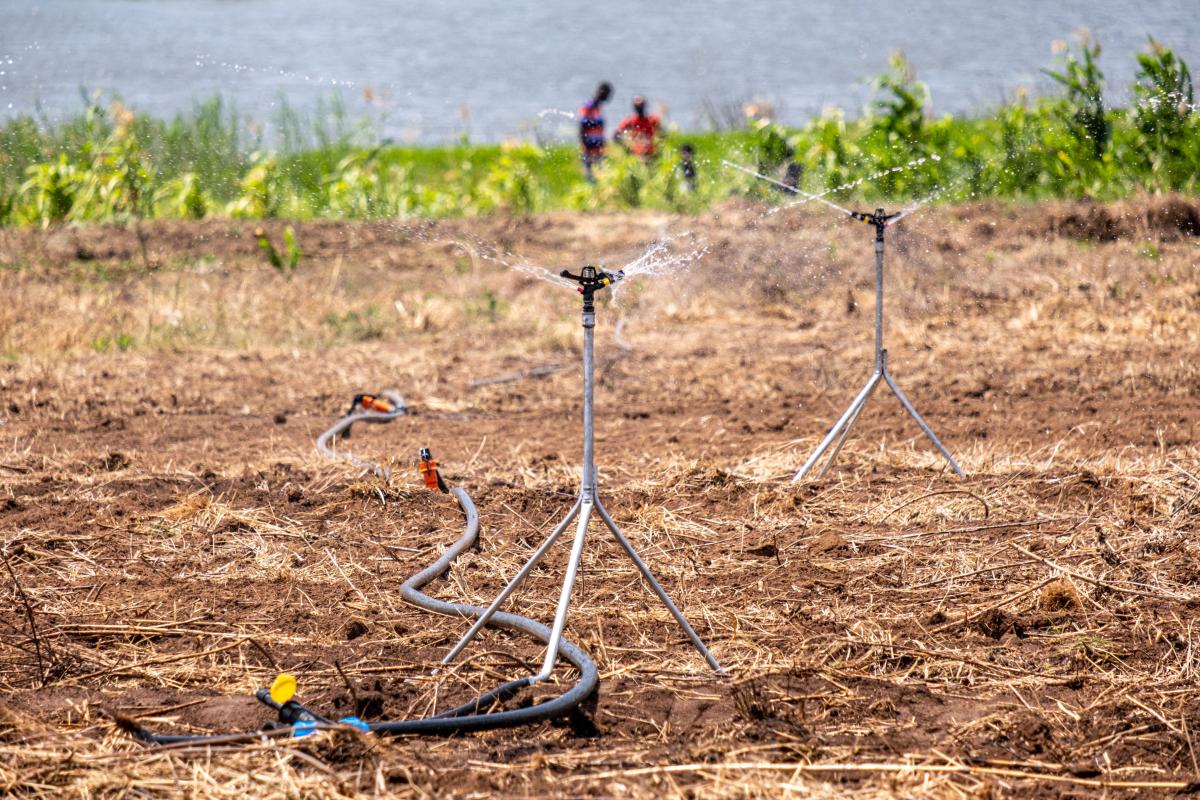
Promoting Sustainable Agriculture for a Resilient Future in Mozambique
Velsoma CUMBANA | 24/01/2024
Around 500 sustainable irrigation systems will be installed this year in the provinces of Manica and Zambézia. This initiative is part of the cooperation between Enabel in Mozambique, the Mozambican government, iDE (International Development Enterprises), and various educational institutions, aiming to boost sustainability and productivity in the agricultural sector. This was announced by our rural development expert,Sophie Teyssier, during her intervention at the annual irrigation subsector review meeting organized by INIR (National Irrigation Institute) on December 21-22, 2023. She presented the activity report of the irrigation component of the RERD2+ project (Renewable Energies for Rural Development Phase 2) throughout 2023 and outlined perspectives for 2024. The meeting had a broad participation from national and international technicians and researchers discussing topics related to institutional perspectives for INIR, such as: irrigation development planning, national irrigation registry, ongoing irrigation component projects, management, and intensification in irrigated areas, and hydrological infrastructure management in the context of climate change. The meeting was concluded by His Excellency Vice Minister of Agriculture and Rural Development, M. Olegário Banze. For this year, Enabel also plans to provide more training in agroecology, irrigation system repair, financial education, and business management for local producers.We are excited to continue with the materialisation of our commitment to build resilient and sustainable communities in the irrigation subsector.
-
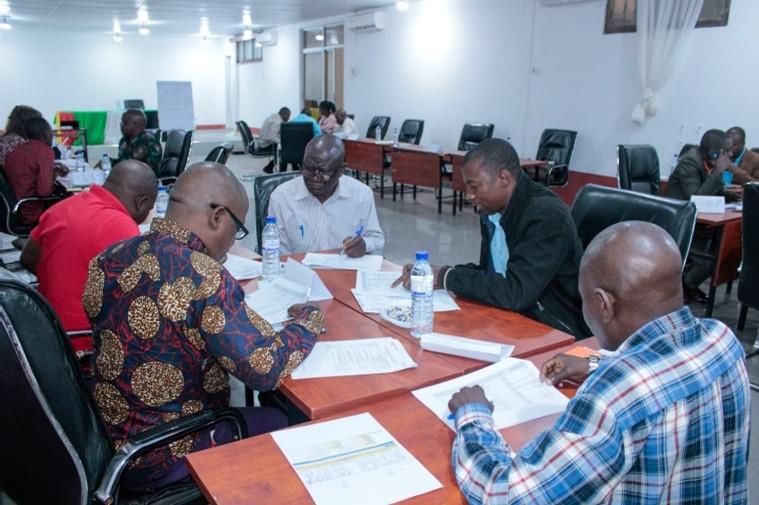
Empowering Mozambique's agriculture with solar irrigation
Akila MUNIR | 14/08/2023
By: Sophie TeyssierEnabel (Belgian Development Agency), in partnership with the National Energy Fund (FUNAE), have been implementing the second phase of the Renewable Energy Program for Rural Development (RERD2) since 2018. At the request of the Government of Mozambique, a solar irrigation component has been introduced, which provides for the supply and installation of irrigation systems largely subsidized by the project, to small (900), medium (100) and large (10) farmers. In addition to the equipment, the project supports as their training in the appropriate and profitable use of these expensive systems. This additional component started in 2021, in partnership with the National Institute of Irrigation (INIR) and is denominated as RERD2(+). Since then, numerous preparatory actions have been carried out, emphasizing the identification and sensitization of potential beneficiaries of the program, as well as the mapping of areas with agricultural potential for the use of solar irrigation systems (SPIS). The process was carried out with the District Services of Economic Activities (SDAE), in coordination with the Provincial Services of Economic Activities (SPAE) and the Provincial Directorates of Agriculture and Fisheries (DPAP) of the Provinces of Manica and Zambézia. Recently (February 2023), an agreement was signed with International Development Enterprise (iDE), an international NGO, for the management of the program grants. Beneficiary prioritization criteria and an “expression of interest” form have been developed by Enabel to guide the beneficiary selection process. The beneficiary selection process is sensitive and delicate, which is why the active participation of key local actors is important in order to guarantee transparency, justice and inclusion. In the current year, the program provides for the selection of 260 producers; as well as the allocation and installation of 150 SPIS, distributed between the two provinces of intervention. The project carried out two workshops in May – one in Manica Province and one in Zambezia Province - to present and discuss with the local authorities what are the access and priority criteria for producers who are interested in the acquisition of these systems. Additionally, the workshops also went through the “expression of interest” form which interested producers will have to fill in, with the help of extension workers.This form will make it possible to assess the current production conditions, and the ability of the applicants to contribute to the acquisition, to use the equipment correctly and profitably, and to ensure its maintenance. It will also be used to establish a “base-line” database. The workshops took place in the two beneficiary provinces of the project, with Enabel's institutional partners. Representatives of the provincial services of Agriculture and the directors of the agricultural extension services of each of the concerned districts participated. The two workshops were particularly lively, with group work that allowed everyone to deepen their understanding of the priority criteria and to participate actively. With the presentation of action plans from the implementing partner iDE, they showed the departments concerned that the project would, as the Extension services stated, “finally start” on the ground. It actually did start, but the installation of SPIS is the “concrete action” expected since the official start of the project - 2 years ago. There is significant excitement for the deployment of these systems on the ground and the second semester of 2023 is expected to demonstrate concrete results.
-
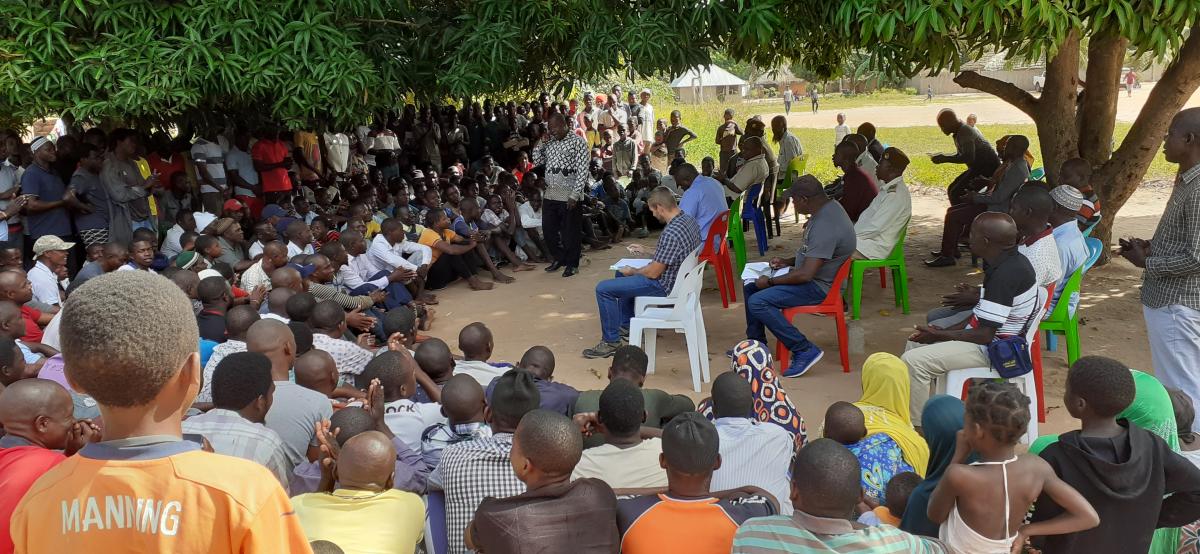
Supporting mini grid development in Mozambique: planning and preparation are key to successful delivery
Akila MUNIR | 17/07/2023
The National Energy Fund (FUNAE) is responsible for providing energy access solutions to the (rural) areas which are far located from the national electricity grid in Mozambique. An important task, considering that the Mozambican government has set the target to realize universal energy access by 2030. The project Renewable Energy for Rural Development, Phase 2 (RERD2+) of Enabel aims to support FUNAE in the development and operation of sustainable energy services in rural areas. One of the project's primary result areas is increasing energy infrastructure, and in coordination with FUNAE, the construction of 5 mini-grids powered by solar panels and batteries in the provinces of Zambézia and Nampula, were agreed upon.Mini-grids are a long-term project characterized by an extensive preparatory phase. Because Mozambique is still developing a national "energy access plan", determining which areas are considered to be electrified by the national grid and which areas by stand-alone mini-grids (Enabel also supports the planning division of FUNAE in the development of these plans), FUNAE and Enabel had to conduct more than 20 socio-economic feasibility studies in the communities of rural Zambézia and Nampula to verify if the technical conditions are present for the realization of a mini-grid and to collect demographic and economic data for the sizing of the mini-grid. Based on these studies, 5 sites were selected to realize mini-grids. Because of the technical complexity of these (hybrid) mini-grids, the public procurement for the design and construction of the mini-grids followed a lengthy process to allow the Project Implementation Unit (FUNAE and Enabel) to negotiate, within the parameters of the applicable legislation, the most appropriate design and adequate technology for the reality in Mozambique. The negotiations allowed for a preliminary quality assurance of the technical proposals, as it was the first time Mozambique would be building hybrid mini grids of this calibre. The contracts were awarded to two construction consortias, which included international and national firms. Another critical step in the preparations for the mini-grid projects was the selection of the beneficiaries in the 5 communities. Because of budget constraints, FUNAE and Enabel decided to continue constructing 5 mini-grids but to only connect ca. 40% of the target population in the first phase. Priority was given to beneficiaries with a social function,such as the local hospital and schools, and beneficiaries who can create economic value in the community, like shops and artisans. The community selected the remaining beneficiaries, thus households and families of the project, based on some technical indications shared by FUNAE. This increased the awareness and support in the communities for the project and resulted in an excellent socio-economic mix of families, which will be initially connected to the mini-grid. After the work of the community, a team of FUNAE, Enabel and the contractors collected all the data of the beneficiaries on the field, using tablets and a digital survey developed by the Project Implementation Unit (Enabel and FUNAE staff). To ensure that more beneficiaries can be connected in a later stage, the project already imposed some technical measures during the design of the mini-grids. For example, a bigger plot to install additional solar panels, a powerhouse with extra capacity and an electrical grid that already covers a big part of the community. After this long preparatory phase, the construction of the mini-grids has started. On all 5 sites, the civil works have been initiated and the containers with batteries have arrived. Recently, FUNAE and Enabel engineers were together with the supervisor, who guarantees the daily monitoring of the works, on the field to inspect the delivered containers and evaluate the quality of the executed works. The completion of the 5 mini-grids is expected between the last quarter of 2023 and first quarter of 2024. The work does not stop after the construction of the mini-grids. It is vital to work on the stimulation of productive use of energy and business development, to improve the sustainability of the mini-grid operations and the overall development of the communities. This can be done by introducing specific electrical equipment in the communities, like energy-efficient electrical corn mills, and setting up financial structures to allow the people in the communities to buy this equipment. This part of the project will be initiated by the team of RERD2, and elaborated more specifically as part of the new portfolio in Mozambique for 2023-2028. This way, Enabel establishes continuity in its projects on the field and in its engagement to support Mozambique in climate change mitigation and energy transition. To read more on the portfolio, click here:https://www.enabel.be/brochure-belgium-mozambique-cooperation-programme-2023-2028/By: Arn Jonkers and Riccardo del Citto
-
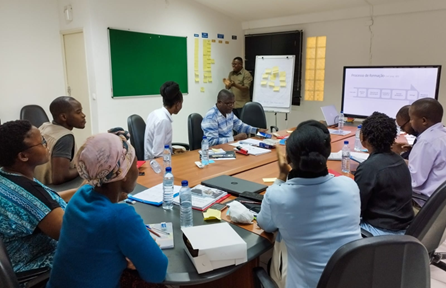
Promoting a ‘Training of Trainers' approach in the energy sector in Mozambique: lessons learned
Akila MUNIR | 15/05/2023
By Esra NURJA and Evert WAETERLOOS, Enabel MozambiqueMozambique is one of the countries most vulnerable to climate change (UNHCR, 2022). In recent years, the country suffered from more frequent and intense extreme weather events such as cyclones, tropical storms and floods. It is against this background that Enabel supports Mozambique in the promotion of sustainable access to renewable energy. As part of this support, Enabel responded to the lack of information dissemination within the different government institutions at central and provincial level, by promoting a Training of Trainer (ToT) methodology within the Ministry of Mineral Resources and Energy (MIREME) and the Energy Regulatory Authority (ARENE). A ToT approach is effective in transferring both technical knowledge and pedagogical competencies to the trainers and trainees. This has the advantage of creating a "cascade effect" of new trainers forming other trainers. An Enabel Junior Expert was assigned to the elaboration and roll-out of such a ToT approach. The priority topics identified to introduce this methodology within MIREME and ARENE were: gender mainstreaming in the promotion of sustainable access to energy, energy data collection and management, and renewable energy technologies.The ToT around gender mainstreaming has been developed and fully implemented. In other words, a ToT manual has been created and 23 Gender Focal Points (GFPs) from different government institutions at central and provincial level, were trained as gender trainers. Three training sessions were organised in 2022; one within the National Institute of Irrigation (INIR), one within the Department of Planification and Cooperation of MIREME, and one in the province of Gaza, within the Provincial Infrastructure Service (SPI).The two other ToTs, around energy data collection and management and renewable energy technologies, were developed but could not be implemented. This means that the training manuals are largely finalised, but have yet to be approved, so no training sessions could be held. This is mainly due to institutional and time constraints, such as difficulties in receiving official data and feedback.This project has brought many lessons learned that can be resumed as follows: first, defining a proper baseline for each target group of trainees is important to better assess their current level of knowledge, and respond more effectively to it. Having mixed target groups is also important to ensure that information reaches end-users more directly. For example, in the case of the ToT around gender mainstreaming, not only training GFPs, but also community leaders may result in a wider and more direct outreach. Secondly, creating a working group is important to facilitate ownership and receive frequent input from the partner institutions. This working group can also help avoid institutional constraints if needed. Therefore, it is important to choose the right people, able to provide frequent and relevant information, and access to relevant contacts. Finally, fostering all kinds of collaboration between different institutions, Enabel projects, national and international junior experts, allows for broader and deeper results, as this stimulates a wider sharing of knowledge and good practices. In this project, two government institutions, part of another Enabel's intervention in Mozambique (RERD2), have benefited from this ToT project by participating in the training sessions, as well as developing and implementing their own training action plan within their institutions, under the supervision of the Enabel Junior Expert. It must be noted, though, that this kind of project can only be successful if sufficient financial and operational resources are allocated.These lessons learned can be used for the improvement of future ToTs, which are foreseen in the new 5-year cooperation portfolio of Belgium with Mozambique. The full capitalisation report can be accessed here: https://www.enabel.be/app/uploads/2023/05/Capitalisation-report-on-training-of-trainers-approach-in-the-renewable-energy-sector-in-Mozambique.pdfPicture 1. Armindo Culeco (INIR) giving a training session to his colleagues of INIR, November 2022. Photo credits: Esra Nurja (Junior Expert at Enabel)
-
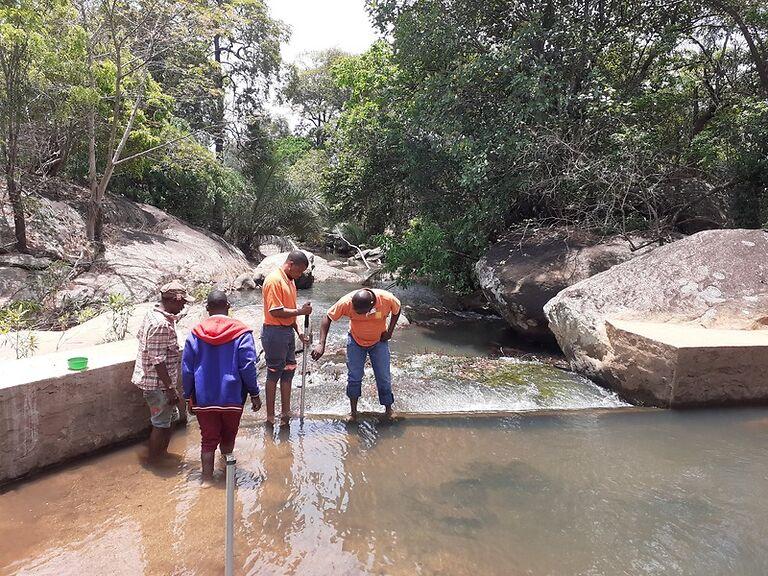
From water to energy: Digitalization and innovation go hand in hand in developing hydropower in Mozambique
Akila MUNIR | 06/12/2022
By: RERD2Energia para todos (Energy for All) The Mozambican government’s ambition is clear: Energia para todos. By 2030, all Mozambican households should have access to sustainable and affordable electricity. In 2019, however, the counter stood at only 29.6%. Mozambique, therefore, faces an enormous challenge. The country has a considerable potential for renewable energy, with significant prospects for hydroelectric and solar power. The north of Mozambique in particular has several rivers with great potential for electricity production. At the same time this is also the region where the population has the least access to electricity. "A match made in heaven". But why is the number of hydropower plants in Mozambique still so limited? Complexity The reason is simple: hydropower projects excel in their complexity. They are projects in which different disciplines and specialisations come together: hydrology, civil works, electromechanics, environmental management and so on. Moreover, building a hydropower plant requires considerable financial resources. Hydropower projects, therefore, are by nature not "a walk in the park". In Mozambique, there are some additional specific challenges. There is a lack of recent measurement data of the rivers and their surroundings. Potential sites are often difficult to reach in this vast country. Financial resources from government are limited, and there is little experience in developing projects with the private sector. FUNAE FUNAE, the National Energy Fund in Mozambique, is responsible for facilitating and realizing ‘off-grid’ energy projects, i.e. outside the national electricity network. FUNAE and Enabel have been working together for more than 10 years on the development of renewable energy projects in Mozambique, both in the field of solar energy and hydropower. Within the framework of the “Renewable Energy for Rural Development, Phase 2 (RERD2)” program, Enabel and FUNAE are jointly seeking solutions to best study the feasibility of hydropower projects, with a clear focus on digitalization and new methods. This approach already resulted in 3 clear innovative ways of working. Solution 1: GIS "This was a very valuable training," commented engineer Norberto Novelo after the intensive training on using geographical information systems (GIS) to analyse new potential locations for hydropower. Enabel and FUNAE jointly developed a methodology to investigate new sites involving historical river data, correlation analysis, freely available geographical data and Excel templates. Concrete key parameters, such as catchment area, river flow and power output, can be calculated and visualised using these techniques. The great added value is especially that the methodology allows to identify the most interesting sites remotely and in advance, i.e. from the desktop, so that FUNAE can make the best use of its limited financial resources. With this new method, five new sites were recently analysed, of which one with a particularly high potential. Solution 2: Drone After selecting the potential sites, the initial analysis needs to be verified in the field through measurements and fieldwork. However, hydropower projects can involve huge areas, up to several km2, often difficult to access. Here too, technology and digitalisation offer a solution. The entire area can be mapped in detail from a safe location by using a drone. Moreover, using a drone, a very detailed digital elevation model of the area can be built, which is particularly valuable during the hydropower plant design. This approach was tested in Nintulo as part of a training program and will be increasingly used in the next couple of years. Solution 3: River flow measurements with community involvement One of the most critical parameters for a hydropower project is the available river flow. One of the biggest problems in Mozambique is the lack of up-to-date measurement data, so these have to be collected in the field. But how do you start? In Nintulo in Zambézia province, Enabel and FUNAE have found a great solution. Together with the local community, a small dam was built in 2019 to allow measurement of the river flow and water levels. Since then, every day, someone from the community walks up the hill to measure the water level. These daily water levels are meticulously recorded in a notebook and the data is shared monthly in a WhatsApp group with FUNAE and Enabel members. Subsequently Enabel and FUNAE, with the support of the community, carry out monthly control measurements. The community also guarantees the maintenance of the access roads to the river so that the measurement sites remain easily accessible. Through this approach, FUNAE and Enabel have already been able to collect measurement data for the past two years. But there is more. The active involvement of the community of Nintulo in the whole process ensures that there is substantial local support for the project. The contacts between FUNAE, Enabel and the community of Nintulo are particularly close, and the use of the common WhatsApp group also ensures that any problems are addressed immediately. Or, as the "chefe de posto", Senhor Renato, repeatedly says, "this project is extremely important for the further development of our community, Nintulo". What's next? After the technical elaboration of a hydropower project, financing must be sought. In the past, energy projects were the exclusive responsibility of the Mozambican government. But in 2021, also due to the influence of FUNAE, the legislation changed so that private funds can also be used for renewable energy projects. In anticipation of further regulations, Enabel and FUNAE are already working together to develop new financing and management models for energy installations enabled by FUNAE. Because, after all, the end goal is very clear: Energia para Todos. Key data29.6% of the Mozambican population of 32 million had access to electricity in 2019Enabel and FUNAE have been working together since 2011More than 2 years of river flow measurements in Nintulo5 new hydropower sites analysed, of which one identified as high potentialDigital elevation model obtained from Nintulo area by using drone
-
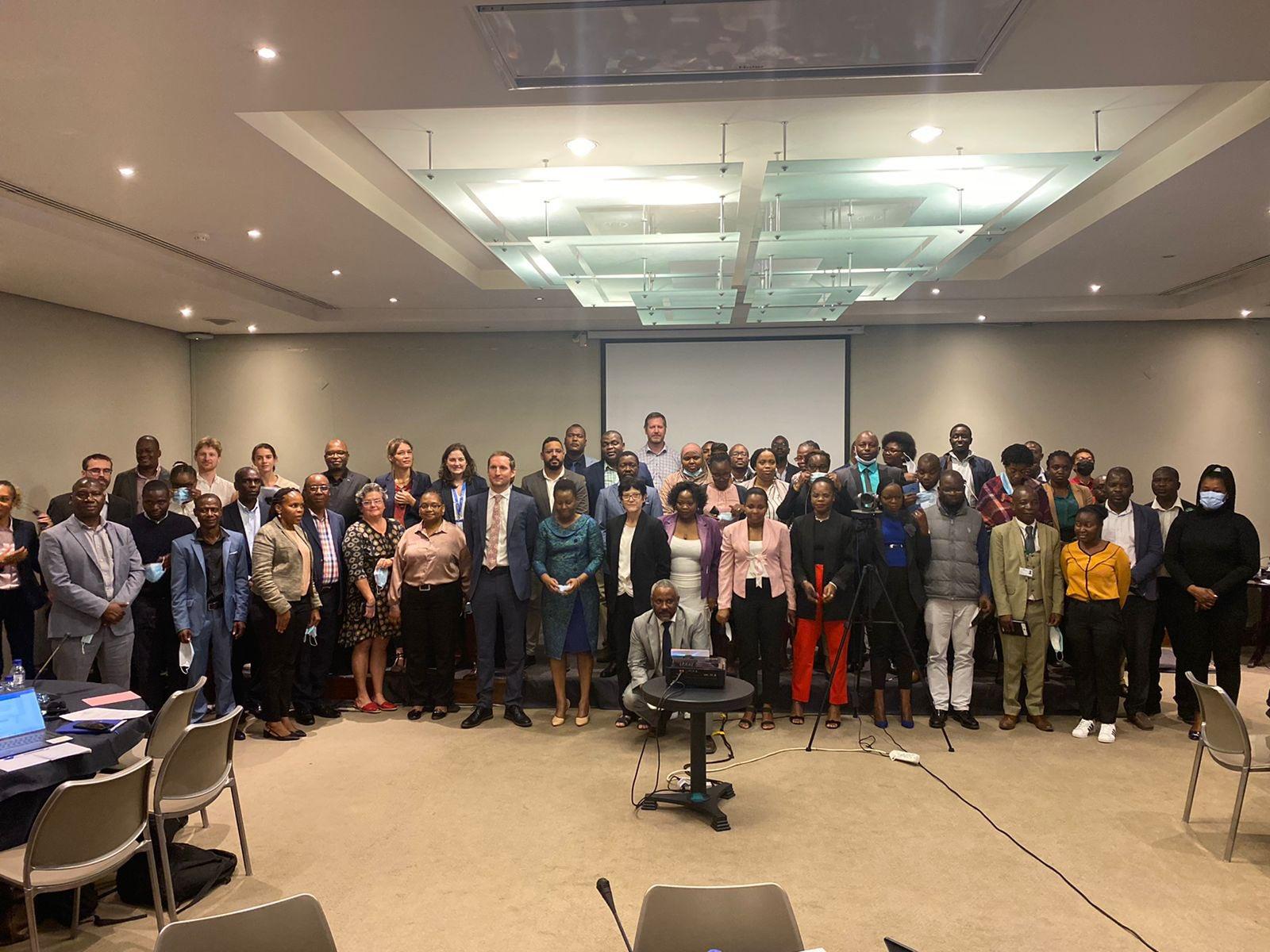
Mobilising climate finance for the implementation of Mozambique’s Nationally Determined Contributions under the Paris Agreement
Akila MUNIR | 29/07/2022
By Simon De Clercq, Samuel Buvane and Adriaan TasSince Mozambique signed the Paris Agreement in 2016, the country has taken several steps towards combating climate change and building climate resilience. At COP26 in Glasgow in 2021, Mozambique launched its Updated Nationally Determined Contributions (NDC) to reflect its raised climate ambitions. The NDC is the national climate plan under the Paris Agreement and lists the country’s planned contributions on climate adaptation and mitigation. Scaling up and accelerating the mobilization of financial resources has been identified as a critical challenge for the implementation of the NDC. Access to climate finance will be important to enable the country’s transition towards a climate-resilient and low-carbon economy. Recognizing the need to mobilise resources and partners, the Government of Mozambique held a Cooperation Workshop on Climate Finance on July 21 and 22 in Maputo. The event was organized by the Ministry of Land and Environment, in collaboration with the Ministry of Economy and Finance. The objective of the workshop was to facilitate a structured discussion between Mozambican Ministries and representatives from development partners and NGOs about how Mozambique can mobilise additional resources. Over 100 participants, attending physically in Maputo and virtually from across the world, took part in the discussionThe 2-day workshop consisted of sessions with the aim of identifying barriers for the mobilisation of climate finance and developing ways to overcome them. Sessions were organised on mainstreaming climate in the national budget, climate finance from development partners, the country’s experience with local adaptation plans, international climate funds, the role of national institutions in the deployment of climate finance, and the potential of carbon markets and innovative financing instruments (e.g. debt-for-climate swaps, the Adaptation Benefits Mechanism and green bonds). The discussion showed that there is a need for clear definitions on climate finance and that the country requires a consistent methodology to track climate finance across different ministries. A climate finance taxonomy would help to develop mobilisation strategies and make informed decisions on which fundings sources to prioritise. While Mozambique has started to integrate climate change in some of its financial decisions, it is important that climate change is mainstreamed across all economic sectors. An effective response to climate change will require that all financial flows are made consistent with a path to low greenhouse gas emissions and climate-resilient development. The sessions showed that, while the country is already mobilising some climate finance, the overall amount is not sufficient to meet the country’s needs. Carbon markets were identified as a way to mobilise additional financing. Participants highlighted that the framework created under Article 6 of the Paris Agreement may be particularly relevant to enable the country’s energy transition. One of the conclusions of the workshop is that a Task Force on Article 6 will be set up in order to allow the country to tap into this type of funding. Climate Finance Experts from Enabel in Mozambique provided technical support to the Workshop. Through its Study and Expertise Fund, Enabel has established a climate finance team to support the Mozambican Government on planning and mobilization of climate finance. The Workshop received financial support from Belgium and the UK. Both countries are co-chairs of the Coalition of the Willing on Climate Change and Resilience, which was established as group of development partners committed to high-level engagement with the Government of Mozambique on issues related to climate change and resilience. Climate finance is one of the work areas of the Coalition. The results of the workshop will support the development of a National Climate Finance Strategy. The development process of this strategy was started by the Government of Mozambique in February 2022, with support from Enabel’s Climate Finance Experts. The discussions that took place during the workshop will also support Mozambique’s participation at COP27 in Sharm el-Sheikh later this year, where climate finance will be one of the key discussion points.
-
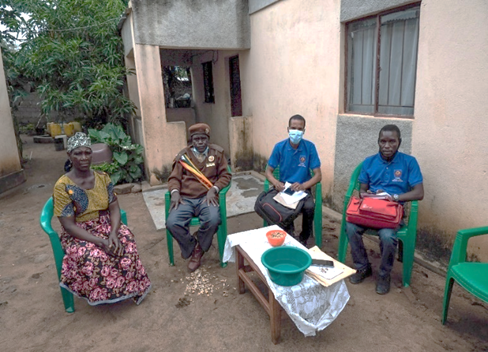
Mozambique: Assessing differentiated energy access through the Multi-Tier Framework (MTF), a learning survey exercise
Akila MUNIR | 31/05/2022
Human welfare has always been closely linked to an appropriate provision of energy. However, in 2019, 600 million people in Sub-Saharan Africa did not have access to electricity and about 900 million people were lacking access to clean cooking energy (IEA, 2019). Mozambique is one of the countries that suffers from energy poverty, with only 40.3% of its population having access to energy (MIREME, 2021). But what does access to energy exactly mean? There is, unfortunately, no universal definition and hence no accurate measurement. The Multi-Tier Framework (MTF) approach to measuring energy access promoted by the World Bank (see https://mtfenergyaccess.esmap.org/) introduces a tiered measurement methodology, based on various energy attributes, such as quantity, quality, affordability, and duration of supply. This methodology focuses on the level of available energy services from the consumer's point of view, and distinguishes 5 different tiers. These range from 0 - which represents no significant access to any electricity at all, to 5, which corresponds to at least 23h of electricity per day. Similarly, a Multi-Tier Framework for measuring access to cooking solutions has been elaborated, based on levels of cooking exposure, cookstove efficiency, convenience, safety, affordability, and fuel availability.In order to better understand the current level of energy poverty in Mozambique, Enabel supports the Ministry of Mineral Resources and Energy (MIREME) with one pilot survey that uses the MTF methodology. The methodology is adapted for this purpose and monitored by VITO, a Belgian independent research organization in clean technology and sustainable development (see https://vito.be). The objective of this learning exercise is to introduce technical government staff from the central and provincial level to the implementation of MTF surveys and their potential to better inform local planning and monitoring of universal access to affordable, reliable, sustainable, and modern energy. In the Central Region of Mozambique, which is the geographical focus area of the Mozambican-Belgian bilateral cooperation project CB MIREME/ARENE, the provinces of Tete and Zambezia were identified for this learning survey. Tete because it has an area that is directly connected to the Cahora Bassa dam, the largest hydroelectric scheme in southern Africa. Zambezia was selected because it has the largest solar plant in Mozambique (40 MW). The first surveys were conducted in Tete, between 28th of March and 16th April 2022, in Cahora Bassa District (urban), and Chifunde District (rural). A total of 71 households were surveyed. The second survey covered 81 households in Zambezia, between 25th of April and 9th of May in Mocuba District (urban), and Milange District (rural). It is important to note that the selection of the districts and neighborhoods was done by the Provincial Services for Infrastructure (SPIs), and took into consideration on- and off-grid consumers and different energy sources.Technical staff from the SPIs, MIREME central level, the Energy Regulatory Authority ARENE, and the Energy Fund FUNAE participated in the learning exercise. The participants were unanimous in recognizing the importance of the MTF methodology. Their first observations are that, even where households have access to the national or a decentralized grid, they only use it for particular activities, such as charging phones, and not for basic needs, such as cooking. Electricity from the national grid is found to be too expensive for energy-intensive activities. It also became apparent that households connected to a local decentralized grid paid much less for electricity than those connected to the national grid.It is important to reiterate that due to time and methodological constraints, proper probabilistic sampling methods were not considered for this learning exercise. The data are not intended to draw statistically significant conclusions, but rather to better understand the collection and analysis of energy data, based on the MTF methodology. We will report in full on the data collected through our random walks, once VITO has been able to assist us in their final analysis. To statistically answer the actual state of energy access of Mozambique’s population, a national survey is deemed advisable. However, we can already conclude that there is a clear need for more affordable and sustainable solutions to electrification and cooking, powered by renewable energy. The promotion of such solutions will assist Mozambique in achieving its ambition to green its energy mix and mitigate the impacts of climate change, which are increasingly being felt in the country.
-
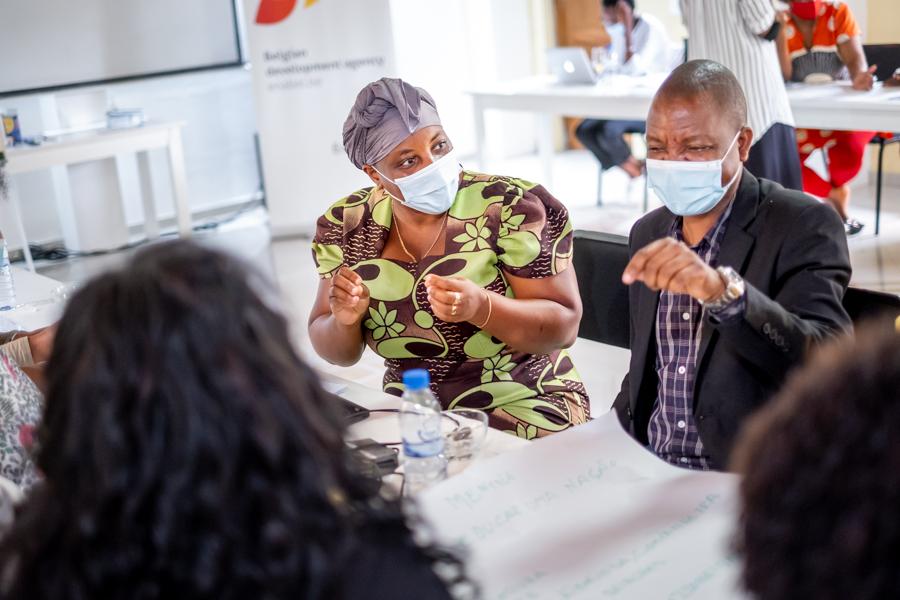
Support to gender mainstreaming in the promotion of sustainable access to energy in Mozambique: a training-of-trainers approach
Akila MUNIR | 08/03/2022
By Esra NURJA and Evert WAETERLOOS, Enabel Mozambique As part of Enabel’s support to the Mozambican Ministry of Mineral Resources and Energy (MIREME) and the Energy Regulatory Authority (ARENE), a study was commissioned to identify strategic entry points for gender mainstreaming in the promotion of sustainable access to energy for all in Mozambique. The study by GreenLight Africa was completed in March 2021, and identified many gaps in technical capacity and available resources within MIREME. The Gender Focal Points (GFP), for instance, do not feel equipped with the proper tools to undertake gender mainstreaming activities. Therefore, the study emphasizes the need to strengthen the capacities of the GFP of MIREME and ARENE at central and provincial level by elaborating a training-of-trainers’ manual on gender mainstreaming in the energy sector.In response to GreenLight Africa’s study and MIREME’s request to improve the dissemination of information and training material within the Ministry, a training-of-trainers’ (ToT) manual on gender integration within the energy sector has been developed. The manual provides technical content on the relation between gender and energy, with a pedagogical support to guide trainers through the content. The aim of this manual is to adapt and apply the ToT approach, which has proven to be efficient in disseminating information and strengthening peer-to-peer learning, in the Mozambican context.The manual resulted from the collaboration with two consultants: Gilda Monjane (entrepreneur and specialist in gender and renewable energy in Mozambique) and GreenLight Africa (research and development organization focusing on the energy and environment sectors). The GFP were involved throughout the entire process, from content identification to review of the manual. Visits to relevant districts were organized during the development of the manual to get familiar with the challenges that rural families face because of limited or no access to energy. The focus was on how the use of renewable energies can contribute to resolving these challenges, especially for women and girls, who are mainly affected by energy poverty, as they are in charge of household activities. As part of the manual development, a five day-training was given by GreenLight Africa to introduce the manual to the GFP at central and provincial level, as well as experts in renewable energies from ARENE, FUNAE and EDM. As most of them received previous training on gender and/or energy, the initial goal of this training was to train the participants in becoming trainers through a ToT approach. However, difficulties in using this approach arose during the training, when gaps in the participants’ knowledge on the topics covered came out. There was, for instance, still a lot of confusion between the concepts of “gender” and “sex”. For this reason, the training was readjusted to focus more on the content of the manual, in order to ensure a proper use of the manual by the GFP afterwards. The manual consists of 6 modules: orientations for the trainer; gender concepts; gender mainstreaming approaches in the energy sector; gender mainstreaming in key energy sector documents; renewable energies; and the role of GFP. Active learning techniques, referring to practical exercises, such as role playing, plenary discussions, group works, brainstorming sessions, etc. were used throughout the whole training with the aim of familiarizing participants with this “teaching and learning” approach.Now that the participants have a better understanding of the content, the next step will be to focus on the pedagogical aspects of the manual. This will require a further monitoring of how they use the manual in their own work environment, and how they continue to broaden and deepen their knowledge. The objective of this support is to equip and prepare the GFP to become trainers and advocates of gender mainstreaming in the energy sector of Mozambique, both in their professional and personal environment.Picture: Regina Ernesto (GFP of Province Cabo Delgado) and Julio Balate (PFG of EDM). November 2021. Photo credits: Isabel Corthier
-
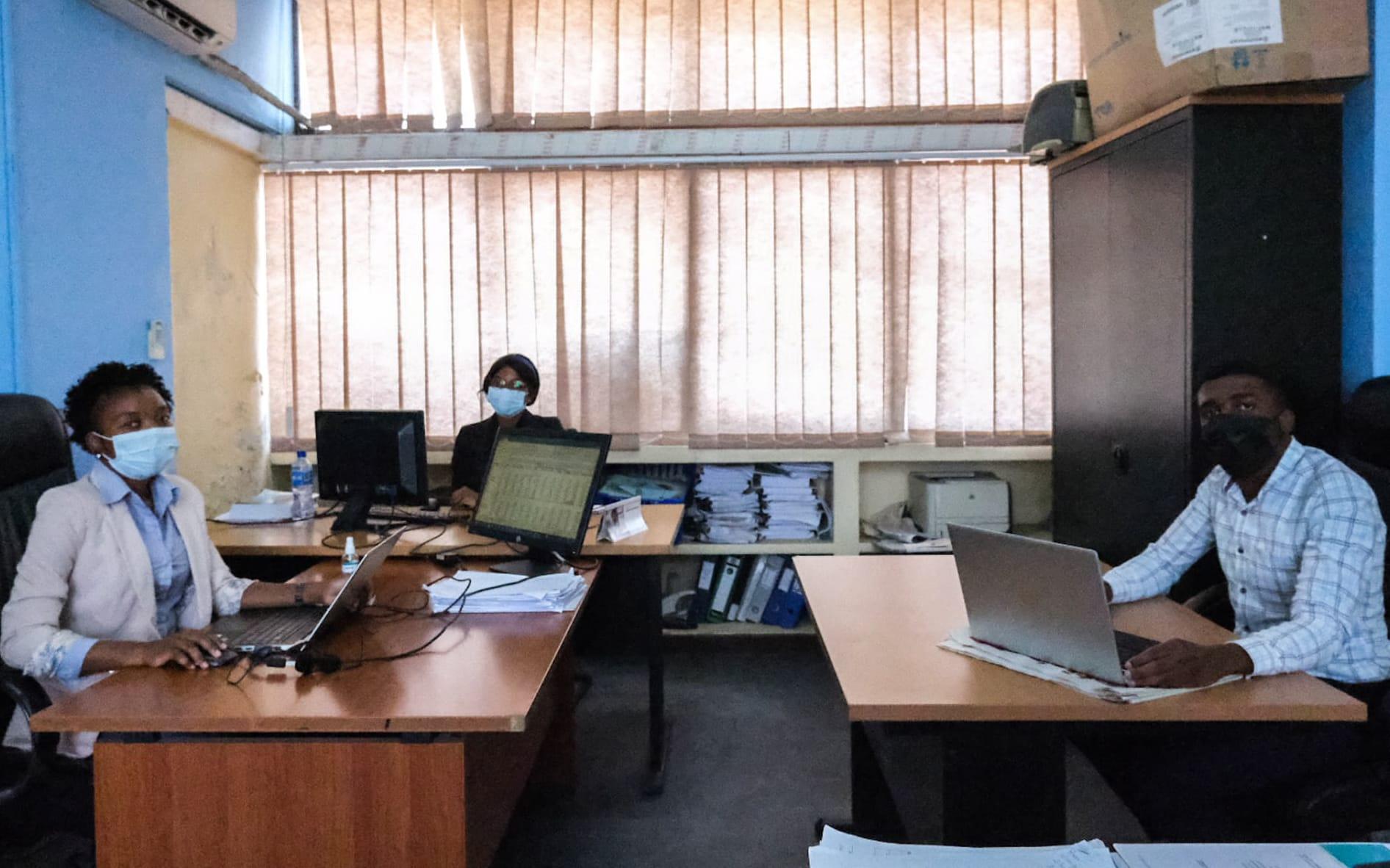
Towards National Junior Experts for the collection and analysis of data on the energy sector in Mozambique?
Akila MUNIR | 22/07/2021
The bilateral collaboration project between the Belgian and Mozambican government “Development of Capacity within the Ministry of Mineral Resources and Energy (MIREME) and the new regulator ARENE”, faces a persistent lack of qualified human resources in MIREME for energy data collection and analysis.It is in this context that in early 2020, five young national university graduates were recruited through Enabel as temporary ‘Energy Data Management Assistants’ to be based in and supervised by MIREME. They were to support MIREME’s planning staff in areas such as surveys, energy balances, demand projections, and energy supply and trade scenarios.So far, these assistants have visited state-related institutions, developed and presented a proposal for the National Energy Balance, supported MIREME’s Statistics Department, and collected long-outstanding energy data. The publication of the last official energy data dates a decade back, and the assistants provide key support towards collecting and publishing the information for the period 2010-2020, together with the National Institute for Statistics (INE).Problems and proposed solutionsAfter the resignation of two of the five assistants, Enabel sought external advice through an interim evaluation of the additional human support programme from Prof.B.Cuamba, an energy expert of the University Eduardo Mondlane in Maputo. The main findings are that although the assistants have contributed to improve the data collection and analysis potential within MIREME, they do not operate under clear enough professional guidance. Prof.B.Cuamba formulates therefore the following recommendations: Provide a clear role and task description, incentives in terms of title and remuneration, and identify future opportunities within MIREME to give a long-term perspective to the assistants;Provide the assistants with further training on the energy sector. This should include certain conditions, such as staying within MIREME for the next 2 years;Establish regular meetings (e.g. weekly) between the assistants and relevant MIREME staff, in which the assistants share their continuously evolving knowledge on energy data with the staff and assist them where needed (using pedagogical tools learned during training);Assign a mentor/ supervisor for each assistant, who can follow-up on their work and make sure they are going into the right direction. This can also be used as an opportunity for the assistant to share doubts, insecurities, etc. A National Junior Expert approach?These recommendations fit remarkably well what we know as the “Junior Expert-approach” of Enabel. This approach gives the opportunity to young graduates to provide specific quality services, and grow professionally with their counterparts, while still learning themselves. Enabel has been using the Junior Expert-approach for years. Junior Experts are assigned to a specific project and have a clear professional framework, with a detailed job description and supervision. This transparency avoids misunderstandings regarding the expectations of both parties and allows a fruitful collaboration. The philosophy behind this approach is to give the opportunity to young graduates to acquire new knowledge and skills on a particular topic, while putting it in practice in their working environment. This creates a double value for both the junior and the partner organization as they both enter a beneficial learning process: The partner organization receives a continuous support, contributing directly to its outputs and development;The Junior Expert has the opportunity to develop personally and grow professionally.Applying a similar approach to the energy data management assistants of MIREME, will, according to the consultant, enable the assistants to grow professionally in a well-framed environment, while contributing to the updating and elaboration of MIREME’s energy data and statistics. Conclusion:Applying the philosophy of the Enabel Junior Expert Programme to the present unclear working conditions of temporary junior staff and assistants within MIREME, may not only give them the opportunity to put in practice acquired knowledge and skills, while MIREME can benefit in the short run from an updated and improved data base on the energy sector, validated by the INE.It also hints at the potential of developing a larger programme of so-called “National Junior Experts” to provide a readily available intervention modality for donors to support capacity strengthening in the public sector and inclusion of the national youth. Public sector human resource constraints may thus be turned into programmes of dedicated technical support, local expertise development, exchange, and even buddying with International Junior Experts. Like International Junior Experts, these national young graduates can then after a limited period of deployment, eventually seek out their own professional trajectories within the public or private energy sector.Unfortunately, as of now, such a programme requires a lot more preparation and mobilization of human resources for coaching and follow-up than MIREME or ARENE can presently offer. But the fact that some of these ‘Energy Data Management Assistants’ are writing up articles at their own initiative on their present work and ideas for the development of the energy sector through biomass resources, for example, points out that young university graduates are eager to get a chance to get involved in the development of their country.By: Esra Nurja and Evert Waeterloos
-
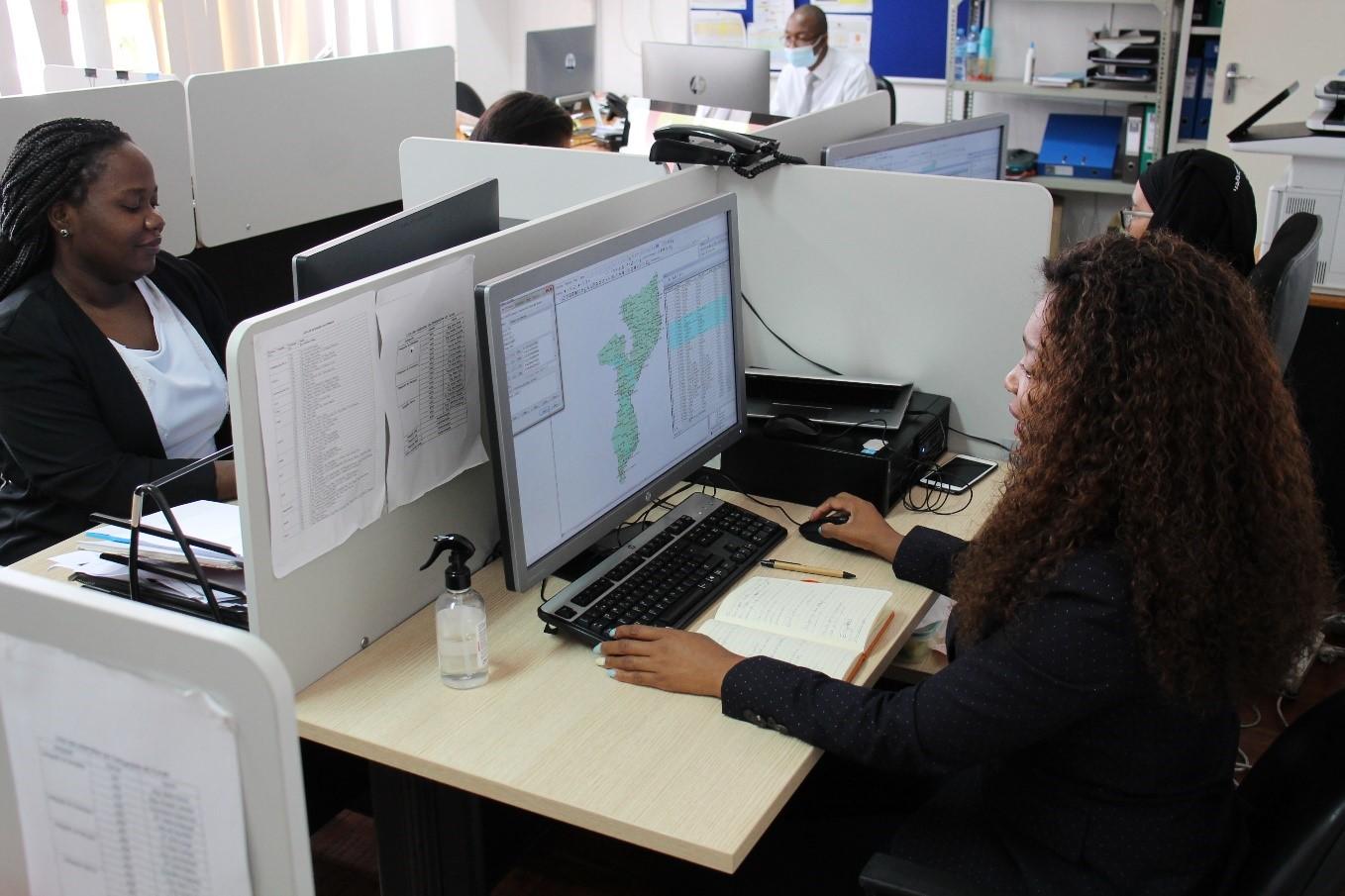
Rural electrification in Mozambique: how to find the right villages?
Akila MUNIR | 03/06/2021
By: Antoine DE CLIPPELE & Riccardo DEL CITTOMozambique has abundant resources for generating clean, accessible and sustainable energy. In 2011, the United Nations launched the Sustainable Energy for All (SE4All) initiative to ensure universal access by 2030 to modern energy services, double the global rate of improvement in energy efficiency, and double the share of renewable energy in the global mix. Although a wide range of socio-economic and environmental arguments are in favour of renewable energy systems, political and legal, technical and financial barriers generally persist. The electricity access in Mozambique in 2018 was estimated at 31.1%. In rural areas, however, this rate drops to 8.0% (World Bank[1]). Meanwhile, in November 2018, the Government of Mozambique launched the National Energy for All Programme to advance the country towards achieving energy access by 2030. The programme prioritises grid expansion and densification but also considers the role of off-grid, renewable energy-based solutions, especially in remote areas. Providing electricity to everyone in Mozambique requires considerable investments. Experience in Mozambique so far shows that the high number of stakeholders in the energy sector, their different interests and lack of coordination increases the risk of duplicating efforts and waste resources. A systematic and objective approach will facilitate coordination in off-grid energy planning. One of the tools available for planning is remote sensing. This allows us to systematically evaluate all the sites for off-grid electrification and determine which locations have the highest potential based on defined criteria and priorities. General planning based on estimates of population size and distribution, electrified areas, location of the national grid and socio-economic data will help prioritise the villages for electrification and determine which delivery technology should be used. Mozambique however faces the same data availability issues as many other countries in Sub-Saharan Africa. Very often, population data or national grid data are not available. This information does not exist or is not available due to the lack of collaboration between the different stakeholders. FUNAE, the National Energy Fund, is particularly concerned about this issue. Indeed, together with the Ministry of Energy and Mineral Resources (MIREME) and the Mozambican Electricity Company (EDM), these institutions need coordination to avoid duplication of effort in the field of electrification. While EDM works on the expansion and densification of the national grid, FUNAE is mandated to electrify the remote(r) areas with off-grid technologies. This, of course means knowing each other's presence in the national territory to avoid working in the same areas. FUNAE has so far been able to identify the most promising off-grid electrification sites due to its widespread presence at the provincial level. The standard approach involves intensive fieldwork, with constant deployment from delegation offices and from headquarters in the capital. However the risk remains that this approach does not take into account places that are more isolated and less well known by FUNAE and its partners. In 2020, this approach was further hampered by travel restrictions related to the Covid-19 pandemic. Through its Renewable Energy for Rural Development Phase II (RERDII) project, Enabel (the Belgian Development Agency), as a partner of FUNAE, proposed, among other solutions, the use of innovative geospatial technologies (GIS) to solve the problem of data availability. After analysing the best practices in other countries, a method was developed internally. The method addresses data scarcity by combining largely openly available data with the existing data in the institution. The idea behind the proposed method is simple: Firstly, we identify the location of population and the existing and planned national electrical grid. This will allow us to filter the villages with large and dense populations so far from the grid that they are unlikely to be connected to the national grid in the foreseeable future. For FUNAE, these two criteria (location of settlements and the national grid) are strategic. After mapping these as accurately as possible, it is still possible to complete the analysis by cross-referencing with other information, such as the location of schools and health centers, distance to major cities, population growth, household income, economic potential and potential productive uses of electricity. Both for the population and the electrical grid, only incomplete and outdated data is currently available in Mozambique. In order to approximate this data and carry out our analysis, we will therefore use alternative approaches. For population data, there are several open data initiatives to estimate the population of countries based on available census data, satellite images, statistical models, built-up areas… These initiatives provide population estimates with a resolution of 100m. This resolution is high enough to identify villages. The joint work in this area between the RERD2 project and the FUNAE Department of Research and Planning made use of GRID3[2]. As far as the data of the national grid is concerned, the lack of data can be compensated by remote sensing and satellite images. Based on night light and population data, we used the Gridfinder[3] model to determine the most probable path of the power lines. We then combined the modelled lines with the available data. By strengthening our cooperation with EDM, the national electricity company, we added the planned power lines to the map.Even though both datasets remain estimates, it is a significant improvement from the situation as it was. It can already be used as a starting point for planning the priority villages for off-grid electrification. After combining all this information, we can draw up a shortlist of villages and, thanks to the FUNAE delegation in each province, contact the local authorities of these places or villages. For the more promising villages, telephone surveys can be conducted to collect more information. Eventually, if the village seems to have sufficient potential, a site mission can be organised to confirm the information and prepare the next steps for electrification.During the application of the methodology conducted recently in two provinces, 14 sites were selected from an initial list of 53 submitted by the provincial FUNAE delegations while 13 new locations were identified that were not included in FUNAE's rural electrification plans. Data collection is now underway through telephone interviews on all priority sites. The potential of the most interesting villages will be verified through field surveys.Ultimately, the methodology described above leads not only to a systematic approach to rural electrification planning, but also to a reduction in the number of on-site missions. Indeed, these missions are resource-intensive and can have a significant impact on the availability of technicians for other tasks. Moreover, working through this method with the different stakeholders has also made it possible to address the issue of collaboration between the different institutions. Although there is still work to be done in this area, working on this method was an important step in raising awareness of the importance of enhanced collaboration in the energy sector. [1] https://data.worldbank.org/indicator/EG.ELC.ACCS.RU.ZS?end=2018&locations=MZ&start=2002&view=chart[2] https://academiccommons.columbia.edu/doi/10.7916/d8-37sa-gy34[3] https://gridfinder.readthedocs.io/en/latest/
